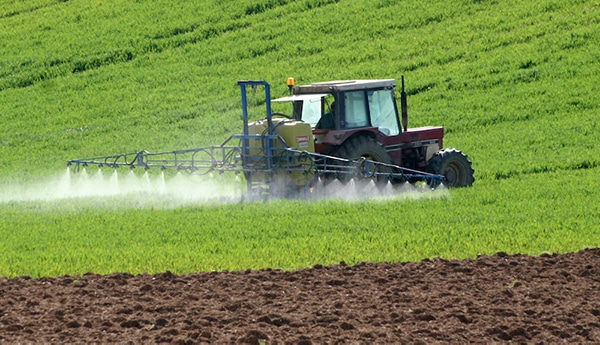Powerlines are a significant potential hazard on rural properties. To assist farmers and other farm workers in safely planning their work, mapping of South Australia’s electricity distribution network is now available online.
The digital mapping website and app will help improve safety for anyone working around or near SA Power Networks’ overhead infrastructure.
The free overhead powerline locations and imagery is available to the public via an interactive geospatial map at www.lookupandlive.com.au.
“It’s a simple tool to assist in the planning of safe work around our electricity distribution network,” SA Power Networks Manager Corporate Affairs, Paul Roberts, said.
“The app provides the ability to search locations in real time and to overlay maps with third party mapping programs, or print maps, as required.
“We’re hoping the new tool will help reduce incidents where farm machinery contacts poles and wires on our network. We want to reduce the risk of injury or death from electrocution, as well as damage to farm equipment and our electricity network.”
Mr Roberts said the website had been successfully introduced in Queensland resulting in a 35 per cent reduction in contacts with overhead powerlines in the agricultural sector.
“SA Power Networks has partnered with the creators of ‘Look Up and Live’ (Energy Queensland) and we appreciate their willingness to freely share this powerline safety planning tool,” he said.
“Here in South Australia we continue to respond to a number of electricity asset strikes each year. We want everyone on the land to be aware of the resources and tools available to ensure safety, particularly at sowing and harvest times, when we see most incidents occurring,” Mr Roberts said.
“This new tool is easy to use, practical and ready to go right now. We encourage everyone working around or near our network to visit www.lookupandlive.com.au or search for ‘Look Up and Live’ on the App or Google Play store to plan for a safe operation.”
An instructional video is available for guidance on how to utilise the app at: https://youtu.be/1MNInpkjd8M
Know your clearances
Touching or getting too close to overhead or underground electricity powerlines can have deadly consequences or result in a serious electric shock.
Clearance (exclusion) zones are the minimum safe distance from live powerlines to reduce the risk of an electric shock.
If you must work near powerlines, you should follow these steps:
1. Develop a safe system of work before you start
- Develop a safe system that ensures a safe distance from powerlines is maintained (know your clearances)
- Identify overhead and underground powerlines on your property using the website www.lookupandlive.com.au or app.
- Conduct a site-specific risk assessment – think about:
- the type of plant and equipment you will be using
- type of work being done
- site and weather conditions
- set-up and pack-up procedures.
2. Keep your workers and contractors informed about electrical safety
- Make sure your workers and contractors are aware of the location of powerlines and plan the work to ensure clearances are observed at all times.
- Show your workers the safe distance from a powerline by marking it on the ground.
- Ensure people are aware that powerlines sag or sway in hot or windy weather.
3. Avoid working in clearance zones
- Wherever possible, operators should use a safety observer while carrying out work near powerlines
- Make powerlines and poles more visible. Reflectors for poles are available from SA Power Networks – call 13 12 61
What to do if a vehicle contacts a powerline
When a vehicle comes into contact with powerlines there is a high risk of electric shock. If this happens, you should immediately contact SA Power Networks on 13 13 16 and stay in your vehicle until it is confirmed that it is switched off.
No-one should approach you or the vehicle until the all-clear has been given by SA Power Networks crews. For safety, people should stay at least 10 metres clear.
You should only evacuate the vehicle if :
- there is a fire
- you are unable to raise help
- equipment could fall directly onto you.
Where it is necessary to evacuate your vehicle to prevent injury, to maximise your safety and avoid the potential for electric shock:
- Jump clear of the vehicle, ensuring you do not touch the vehicle and ground at the same time.
- Calmly walk or shuffle away using small steps.
- Call SA Power Networks immediately on 13 13 66.
- Do not return to the vehicle until after the area has been made safe.
- Keep other people well clear.
In an emergency call 13 13 66. For an ambulance or police assistance, call 000.






